By Mike Smith
Something which can get lost in the maze of formations and tactics, especially with young teams, is the idea of what is actually “ going on” during the run of play ( situational awareness). Obviously the “goings on” can change from second to second during a match and this is where, to me, a good defensive “unit” develops. Regardless of formation, coaches should take some time to make sure their defensive group / approach is “sharp” in the following situations.
Don’t Endlessly Balance
Pressure, Cover, Balance – the foundations of good defense. However, how balanced does a line really have to be, especially if there is good pressure on the ball? Below, shows a typical Pressure, Cover, Balance set up.
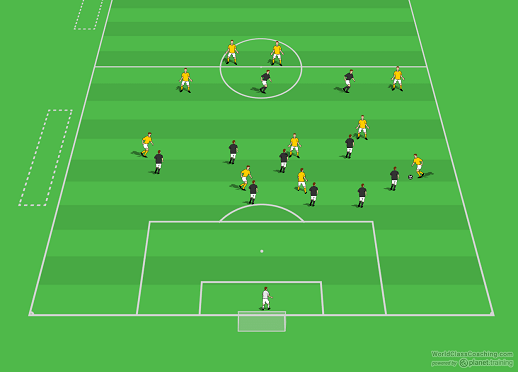
The two weak side ( left in the diagram above, labeled in the diagram below) midfielders are balancing out the midfield line with left back and left center back balancing out the defensive line.

The idea is for the defensive unit to get more aggressive with pressure and COMMUNICATE this to the midfielders so there is good coverage across the formation. The diagram below shows the idea of increased pressure. Instead of 4 players falling back and then staying in a balancing role ( above ), have them fall back and then shift to pick up pressure. Again, a good defensive unit will organize this fluidly ( see below ).
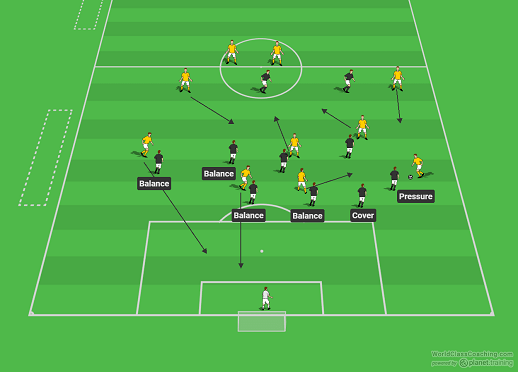
Pinch All The Way In
Another aspect of a sharp defensive unit is the extent to which they pinch in together to cut down critical space in the center of the field. The diagram below shows ( red triangle ) a group of relatively well spaced defenders, however an opponent with good foot skill, vision , touch, timing, etc….will easily exploit any lane big enough for a player to run through.
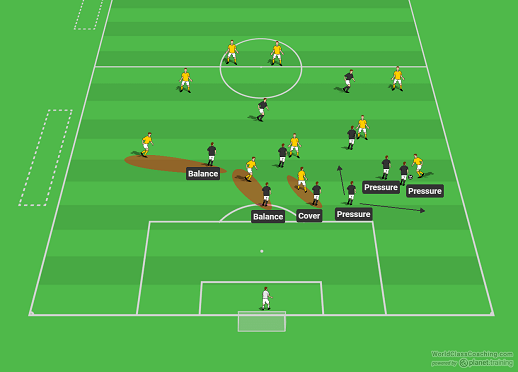
A good defensive group will pinch all the way in ( as shown below) to cut this option off. Even if they give up a bit of wider space, they ( including the midfielders who drop in ) know they will be defending from the inside out as they recover rather than the disastrous outside in approach. Notice( below ) how there are now defenders positioned in both the running and passing lines of the attacking team, which will make it hard for anything dangerous to develop.
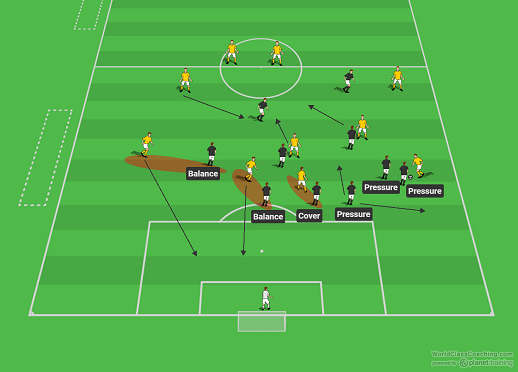
Constantly Give Information
A good defensive unit is constantly communicating with each other, the keeper and the midfielders as to what type of organization is needed to get the most out of every play. If it is a defensive play obviously we’re talking about marking and space and pressure, etc…If it’s coming out with the ball, we’re talking about time, passing options, deep support, etc… regardless, the willingness and ability to constantly give information (and sometimes flat out bark out orders ) is as much a learned and perfected skill as any when it comes to being sharp.
To practice these concepts, try this progressive drill:
Set Up
Place 4 defenders on the end line, 2 at each side of the goal. Place an additional 2 defenders at the top of the penalty box at the ends of the arc. 4 attackers wait as shown near the mid field line. One of the defenders on the end line sends the ball out to the 4 attackers and it is free play from there.
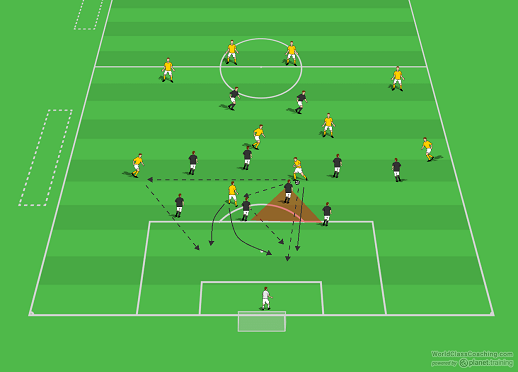
The idea is for the 6 defenders to be able to pick up pressure, cover and balance first and then apply additional pressure to win the ball. IF the defenders win the ball, they simply clear it across the half line. As a progression, add a target player just across the half line for the defenders to score to, while also adding an additional attacker as well.
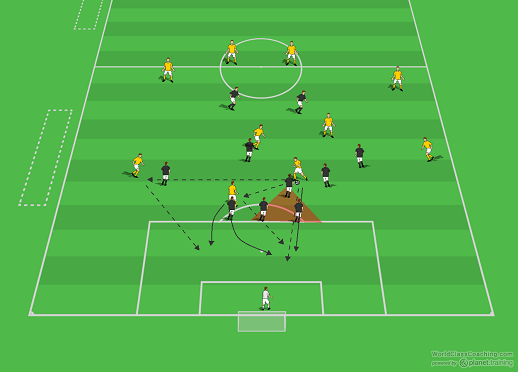
Coaching Points
The coach should focus the defenders on applying more pressure than balance once the defensive unit has a good defensive shape. Otherwise, the balancing players are just wasted and can get caught watching soccer instead of playing it.
Pinching In
Set Up
Using the same set up as the previous activity, add one more attacker for a 6 v 5 and start the ball from one of the higher defenders. The idea here is to bait the attacking team into trying to force it up the center thus challenging the defenders to pinch in and close down the middle.
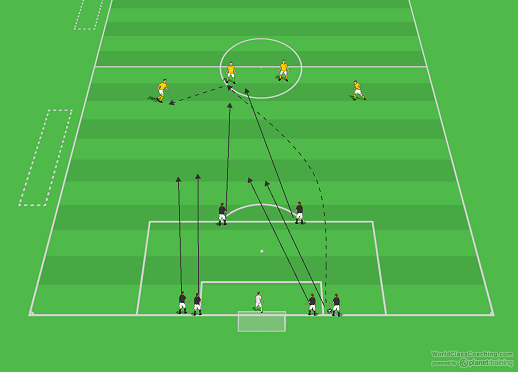
If the attackers force the ball out wide because they cannot penetrate the center space, consider it a job well done. The same rules for scoring and progression from the first drill can apply to this one. Coaches should focus on the pinched in shape here.
By Mike Smith
Currently the Head Coach for University Heights Academy Boys Soccer in Hopkinsville, KY , Mike is in his 14th year as a high school head coach with 23 years coaching experience overall and 34 year as a student and fan of the game. He holds a USSF D License.


